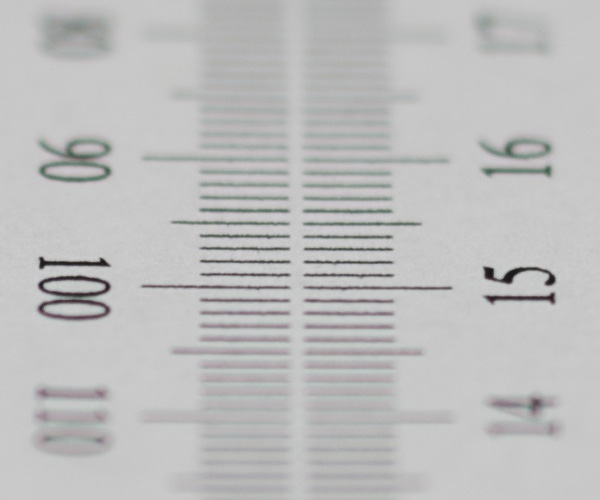|
Page 2 of 3

Distortion
Macro lenses are renowned for minimal distortion and the 150mm f/2.8 APO EX is no exception here - the degree of distortion is absolutely negligible.
Mounting the 1.4x APO tele converter adds some pincushion type distortion, but only to a degree that is still no issue for most subjects.
The chart above has a real-world size of about 120x80cm.
Vignetting
Typical for most fast lenses there is a visible amount of vignetting at max. aperture. Stopping down eases the situation from f/4 onwards, but even stopped down to f/11 corner light fall off is still around 0.5 EV.
The issue look a bit better with the tele converter attached, except wide open, where the combination vignettes even a bit more than the lens alone.
We're performing our vignetting analysis based on
(uncorrected) JPEGs straight from the camera. The JPG engine of the Nikon D3x features a rather flat
gradation curve, thus has a moderate contrast characteristic, resulting in comparatively low vignetting figures - the
corresponding Canon figures are roughly 40% higher due to the more
aggressive default contrast setting.

MTF (resolution)
The Sigma delivers very good resolution in the image center wide open already, stopping down lifts the resolution to excellent values. From f/11 onwards diffraction reduces resolution again, but even fully stopped down (f/22) the result is still quite usable.
Borders and corners are on a very high level, too, with very good resolution from wide open down to f/16. The peak performance is reached at f/5.6 with sharpness just short of excellent values.
Adding a 1.4x TC does not change the general characteristics of the MTF curve, but reduces the resolution by roughly one school mark throughout most of the aperture range.
Please note that the MTF results are not directly comparable across the different systems!
Below is a simplified summary of the formal findings. The chart shows line widths
per picture height (LW/PH) which can be taken as a measure for sharpness.
If you want to know more about the MTF50 figures you may check out the corresponding
Imatest Explanations

Chromatic Aberrations (CAs)
Lateral chromatic aberrations (color shadows at harsh contrast transitions) are generally very low for the lens alone as well as the combination of lens and 1.4x TC. This is an excellent result in the full format scope and certainly no issue in the field. In addition, the small traces of CAs can easily be corrected in software or by the camera itself (if you shoot JPEGs and own a current Nikon DSLR).

Bokeh
The quality of the bokeh (out-of-focus blur) is a primary aspect for such a large aperture lens. The Sigma is capable of delivering very pleasing results here.
Bokeh is a bit rough and nervous in front of the focal plane, but very smooth behind it, even in the transition zone (where many lenses struggle).
Background highlights are evenly filled with only a very small amount of outlining wide open. Mechanical vignetting affects the shape of the highlights towards the borders at f/2.8 and also at f/4.

Bokeh Fringing
Bokeh fringing is a common issue with relatively fast glass. It's often visible as halos of different colors in out-of-focus areas - magenta (red + blue) in front of the focus point and green beyond.
The Sigma is an APO (apochromatic) lens, which on paper should handle bokeh fringing very well. Indeed, the amount of bokeh fringing is quite low, but traces of green and magenta halos are still visible wide open. Stopped down to f/4 and beyond, though, the issue is resolved form a field perspective.
These shots also show the almost complete lack of focus shift when stopping down, as mentioned in the MTF section.
|
Move the mouse cursor over the f-stop marks below to observe the respective bokeh fringing
|
| f/2.8 |
f/4.0 |
f/5.6 |
f/8.0 |
|

|
|